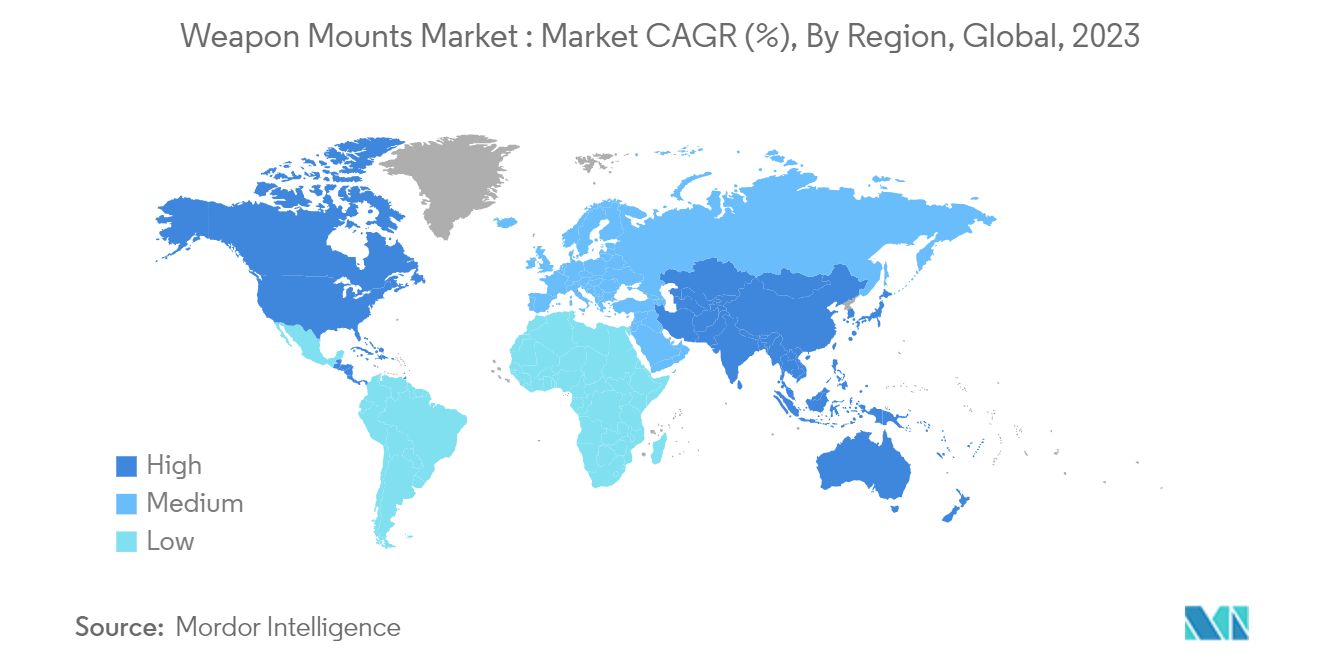Market Trends of Weapon Mounts Industry
The Land Segment is Expected to Dominate the Market During the Forecast Period
The global defense industry is experiencing significant change, driven by increased investment and the adoption of new technologies. As geopolitical tensions rise, the emphasis on modernizing military capabilities, including developing ground-mounted systems for various land platforms, is increasing. These systems are designed to enhance stability and performance in challenging environments.
The demand for such advanced equipment is part of a broader trend toward digitalization and innovation within the defense sector. Companies are investing in digital technologies to address supply chain complexities and workforce challenges while focusing on product innovations that meet evolving customer preferences and sustainability goals.
Moreover, the integration of the Internet of Military Things (IoMT) and automated military systems is rising, indicating a shift toward more interconnected and autonomous defense solutions. For instance, in March 2024, Milrem Robotics completed a weaponized unmanned ground vehicle demonstration for the US Army Expeditionary Warrior Experiment (AEWE). The activity focused on validating “state-of-the-art” solutions to increase warfighter lethality through 2040.
The total acquisition costs for the US Army's ground combat vehicles are expected to reach around USD 5 billion per year through 2050, according to the US Congressional Budget Office (CBO). Of that, USD 4.5 billion is meant for procurement, and USD 0.5 billion for RDT&E. Such procurements and growing expenditure on the upgradation of the current fleet are expected to propel the growth of the market over the forecast period.

The Asia-Pacific Region is Expected to Witness the Highest Growth During the Forecast Period
Due to the increasing geopolitical tensions in the region, countries like China, India, Australia, South Korea, Singapore, and Japan are significantly investing in procuring new vehicles to replace their aging fleets, which have been in operation for over 30 years. Major military powers, including India, China, Japan, and South Korea, are constantly increasing their annual defense budgets. This budget includes a significant portion for improving and expanding air superiority, driving the growth of military aviation in the region.
For instance, in the budget of FY 2023, the Indian government allocated about 10% more for the Indian Air Force than the previous budget, including payments for the new Rafale fighters and the manufacturing of Sukhoi-30MKIs and Tejas fighters. Also, in May 2023, South Korea's Defense Acquisition Program Administration (DAPA) approved the mass production of a fourth batch of the Hyundai Rotem K2 main battle tank (MBT) for the Republic of Korea Army (RoKA). All these factors, in turn, are expected to drive the market's growth in the region during the forecast period.


